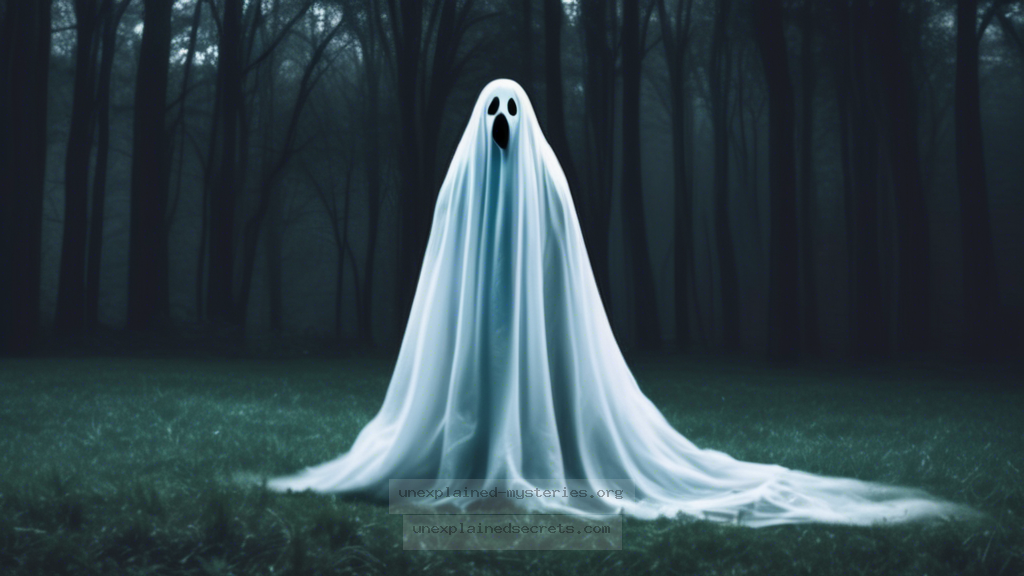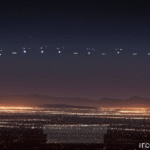What Can the Most Documented Ghost Sightings Teach Us About the Nature of Paranormal Phenomena?
What Can the Most Documented Ghost Sightings Teach Us About the Nature of Paranormal Phenomena?
The realm of the paranormal has long captivated human imagination, a tapestry woven with threads of fear, fascination, and intrigue. Ghost sightings are perhaps one of the most discussed aspects of this mysterious world, sparking debates over their validity, purpose, and implications. By examining some of the most documented ghost sightings throughout history, we can glean insights not only about the ghosts themselves but also about the very nature of our reality, consciousness, and what lies beyond. This exploration is crucial for both skeptics and believers alike, as it challenges our understanding of life, death, and the possibility of existence beyond the physical realm.
The Historical Context of Ghost Sightings
Ghost sightings can be traced back to ancient civilizations, where they were often intertwined with religious beliefs and cultural practices. In ancient Egypt, for instance, the concept of the afterlife was paramount, and it was believed that the spirits of the deceased could return to the living world. Similarly, in ancient Greece, philosophers like Socrates and Plato explored the idea of the soul and its immortality, leading to widespread beliefs in ghosts.
During the Middle Ages, the perception of ghosts took on a more sinister tone, often associated with witchcraft and demonic possession. As the Enlightenment ushered in a period of reason and scientific inquiry, ghost sightings were increasingly dismissed as superstition. However, the 19th century saw a resurgence in interest, particularly with the Spiritualism movement, which claimed to communicate with the deceased. This era produced a plethora of documented ghost sightings, many of which continue to be referenced today.
Core Concepts and Theories Behind Ghost Sightings
There are several theories that attempt to explain ghost sightings, ranging from psychological phenomena to quantum mechanics. Here are some of the most prevalent:
- Psychological Explanations: Many ghost sightings can be attributed to the power of suggestion, pareidolia (seeing patterns in random stimuli), or sleep paralysis. These psychological phenomena can create vivid illusions that people interpret as ghostly encounters.
- Environmental Factors: Certain environmental conditions, such as infrasound (sound below the range of human hearing) and electromagnetic fields, have been shown to induce feelings of unease or hallucinations, leading individuals to perceive ghostly presences.
- Quantum Mechanics: Some theorists suggest that ghosts may exist in a parallel dimension, aligning with theories of multiple universes. This perspective posits that encounters with ghosts could be glimpses into alternate realities.
Did You Know? In many cultures, ghost sightings often occur in places with significant emotional or historical weight, suggesting a connection between the spiritual and the physical world.
Notable Documented Ghost Sightings
Throughout history, numerous ghost sightings have been documented, some of which stand out for their credibility and impact. Here are a few notable cases:
- The Brown Lady of Raynham Hall: This famous photograph taken in 1936 purportedly shows the ghost of Lady Dorothy Walpole. The image has been analyzed extensively, and while skeptics argue it could be a double exposure, many believe it remains one of the most compelling pieces of evidence.
- The Ghost of Anne Boleyn: Numerous sightings of Anne Boleyn’s ghost have been reported at the Tower of London, where she was executed. Witnesses describe her wearing a white dress and carrying her head under her arm—an image that has become iconic in ghost lore.
- The Amityville Horror: The Lutz family’s experiences in their Long Island home in the 1970s have been both sensationalized and scrutinized. Despite the controversies, their claims of supernatural occurrences sparked widespread interest in hauntings.
Practical Implications of Ghost Sightings
The implications of ghost sightings extend beyond mere curiosity. They challenge our scientific understanding and provoke questions about life after death, consciousness, and the nature of reality itself. For believers, these experiences can offer comfort and a sense of connection to lost loved ones. For skeptics, they present opportunities to explore psychological and environmental factors that influence human perception.
Additionally, ghost sightings have significant cultural implications. They often reflect societal fears, beliefs, and values. For instance, in times of war or societal upheaval, reports of hauntings may increase, suggesting a collective consciousness grappling with trauma.
Insight: Ghost sightings can serve as a barometer of societal anxiety, with fluctuations in reports often aligning with historical events.
Alternative Perspectives on Ghost Phenomena
While mainstream science often leans towards skeptical interpretations of ghost sightings, alternative perspectives exist. Some metaphysical and spiritual communities assert that ghosts are manifestations of unresolved energy or consciousness that linger in the physical realm. This view emphasizes the importance of emotional healing and closure for both the living and the deceased.
Further, some researchers advocate for a multidisciplinary approach, blending psychology, sociology, and spirituality to comprehensively understand ghost sightings. This perspective encourages collaboration among scientists, historians, and spiritual practitioners to explore the many facets of these phenomena.
Common Misconceptions About Ghost Sightings
Despite the extensive discussion surrounding ghost sightings, several misconceptions persist:
- All Ghosts Are Malevolent: Many people view ghosts as inherently evil or dangerous. However, countless reports describe friendly or benevolent spirits.
- Ghosts Can Only Be Seen in Specific Locations: While certain places may have higher incidences of sightings, ghosts can theoretically appear anywhere, as they are thought to be tied to emotions or unresolved issues rather than physical locations.
- Ghosts Are Always Human Spirits: Some cultures believe in non-human entities or nature spirits, expanding the definition of what a ghost can be.
Clarification: Not all ghost sightings are tied to traumatic events; many are linked to positive memories or experiences.
Best Practices for Investigating Ghost Sightings
For those intrigued by ghost sightings and interested in investigating further, there are several best practices to consider:
- Document Everything: Keep a detailed log of dates, times, locations, and experiences. Photographs and audio recordings can also provide valuable evidence.
- Use Scientific Equipment: Many paranormal investigators utilize tools such as EMF detectors, infrared cameras, and EVP recorders to capture potential evidence.
- Respect the Location: Engage with the site respectfully, considering its history and significance. This approach can foster a more welcoming environment for potential encounters.
Future Developments and Ongoing Research
As technology advances, the investigation of ghost sightings is becoming increasingly sophisticated. Researchers are exploring the use of artificial intelligence and machine learning to analyze patterns in ghost sightings and identify correlations with environmental factors.
Furthermore, interdisciplinary studies are emerging, combining elements of psychology, neuroscience, and quantum physics to explore the nature of consciousness and the possibility of life after death. Such research could fundamentally alter our understanding of reality and the afterlife.
Future Insight: The integration of technology in paranormal investigations may lead to more rigorous and scientifically valid studies of ghost phenomena.
Conclusion: What Do Ghost Sightings Reveal About Our Reality?
Ghost sightings remain one of the most compelling mysteries of the human experience. They challenge our perceptions of life, death, and consciousness while reflecting deep-seated cultural beliefs and fears. By exploring documented sightings, historical context, and various theories, we gain insights into not only the nature of ghosts but also our own understanding of reality. Whether one approaches the topic from a skeptical or spiritual angle, the exploration of ghost sightings invites a profound inquiry into the mysteries that lie beyond our immediate understanding.
As we continue to investigate and discuss these phenomena, it is critical to keep an open mind and consider the multifaceted perspectives that surround the world of ghosts. After all, the truth may be far more complex and fascinating than we can currently comprehend. 💡
Other Articles
Recent Posts
- What Happened to Flight MH370? The Conspiracy Theories That Still Haunt Us
- What Secrets Lurk Within the Walls of the Infamous Trans-Allegheny Lunatic Asylum?
- What Evidence Supports the Existence of Bigfoot in the Pacific Northwest?
- What Happened to the Indus Valley Civilization? Unraveling the Mysteries of Ancient Urban Life
- Can Telepathy Be Scientifically Proven Through Laboratory Evidence?







